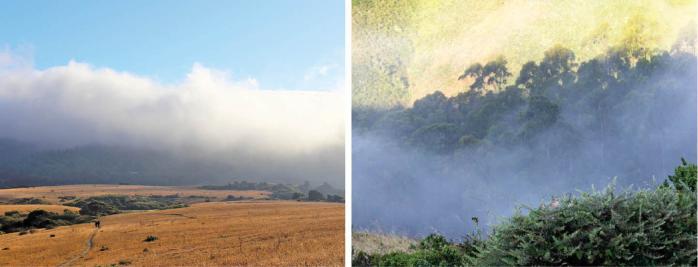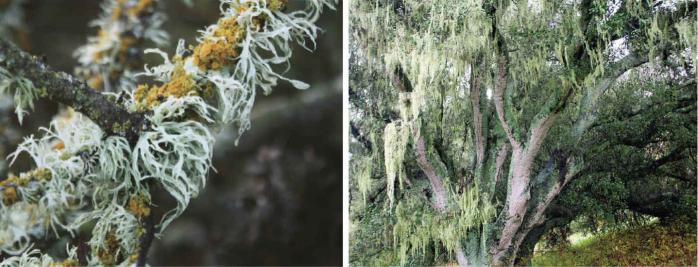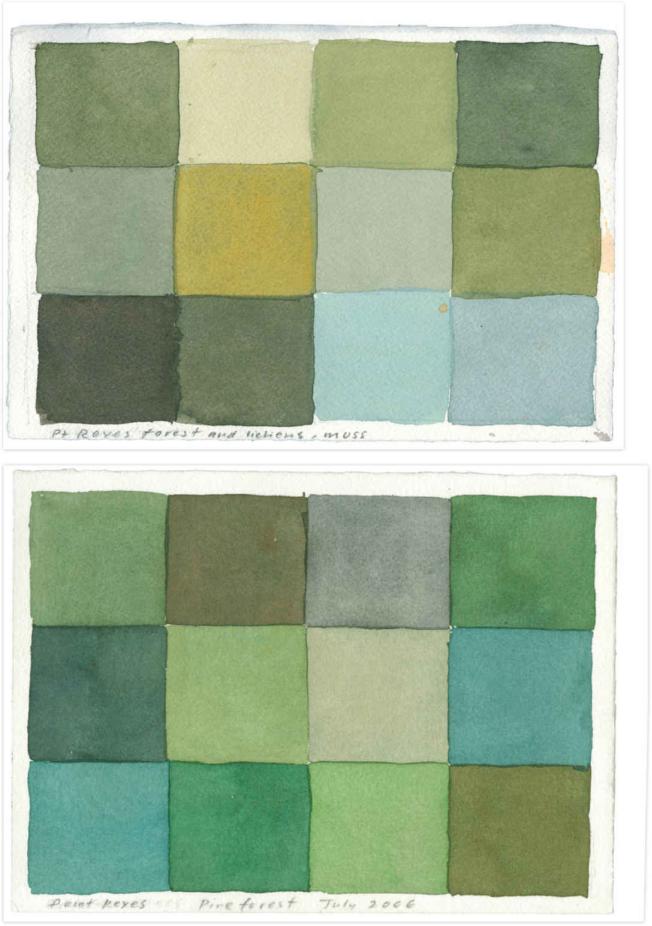
- •Acknowledgments
- •Introduction
- •Landscape
- •Ocean/Sky
- •Light
- •Wildflowers
- •Fog, Mist, and Haze
- •Forest, Lichen, and Moss
- •The Colors of Point Reyes National Seashore
- •Materials
- •Essential Equipment
- •Optional Equipment
- •Preparation
- •Paper Size & Grid
- •Pigments & Color Theory
- •Technique
- •Brush Marks
- •Painting
- •A Note on the Photographs
- •Habitat
- •Light
- •Weather
- •Seasons
- •Seasons: A Year in Color
- •Antigua, Guatemala
- •Lake Atitlán, Guatemala
- •Pátzcuaro, Mexico
- •Luxor, Egypt
- •The Dead Sea, Jordan
- •Petra, Jordan
- •Lake Issyk-Kul, Kyrgyzstan
- •Newport, Pennsylvania
- •Barney’s Joy, Massachusetts
- •Sacred Valley, Peru
- •Dominica, West Indies
- •Isle of Skye, Scotland
- •Inverness, Scotland
- •Mitchell, Oregon
- •New York, New York
- •San Francisco, California
- •Portland, Oregon
- •Big Picture
- •Detail
- •Sky Patch
- •Terrain
- •Rocks
- •Water
- •Color Walk
- •Color Memory
- •Naming Colors
- •Color Mixing
- •Primary and Secondary Colors
- •Tertiary Colors
- •Analogous Colors
- •Complementary Colors
- •Value or Tone
- •Color Temperature
- •How Many Greens are there?
FOG, MIST, AND HAZE
What is the color of fog? How do you capture the color of mist as it rolls in and out?
Fog and mist are made from tiny suspended water droplets, and they usually form at night, when the air is too cool to hold its humidity. Fog is considered a low-lying cloud that captures moisture as it rises from the ground. Mist is less dense and usually stays close to the ground.
Haze is composed of dust from the land and salt from the sea suspended in the air. It makes distant dark objects appear blue and distant white objects appear yellow. In coastal areas, salt crystals form in the air from the evaporation of wave droplets. These small, invisible crystals are largely responsible for the blue color in the atmosphere, and they are the reason the ocean sky is often bluer than the sky over land.



FOREST, LICHEN, AND MOSS
One of my favorite places in Point Reyes is a grove of coast live oak in a woodland forest on the eastern ridge. In the presence of the silent oaks, time slows, and my awareness of the unseen life of the forest around me increases. Fog lingers in the canopy. A squirrel takes a flying leap in search of acorns. Tree limbs weave together into arches. Lichen drips from the branches, and moss crawls up the trees. A vast network of roots stretches underneath the soil.
I observe the colors of the grove through dappled light—a mosaic of greens, silvers, and grays. A shaft of light illuminates a brilliant transparent green leaf. Lichens, mosses, and bark create an intricate patchwork of color and texture. An abundance of water in early spring makes sponge-like moss come alive with intense chartreuse and neon green. In late fall, the colors fade to ochre-tinged green and russet brown. It is an ever-changing, living palette.

